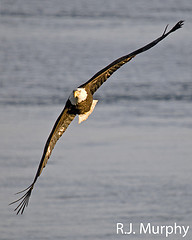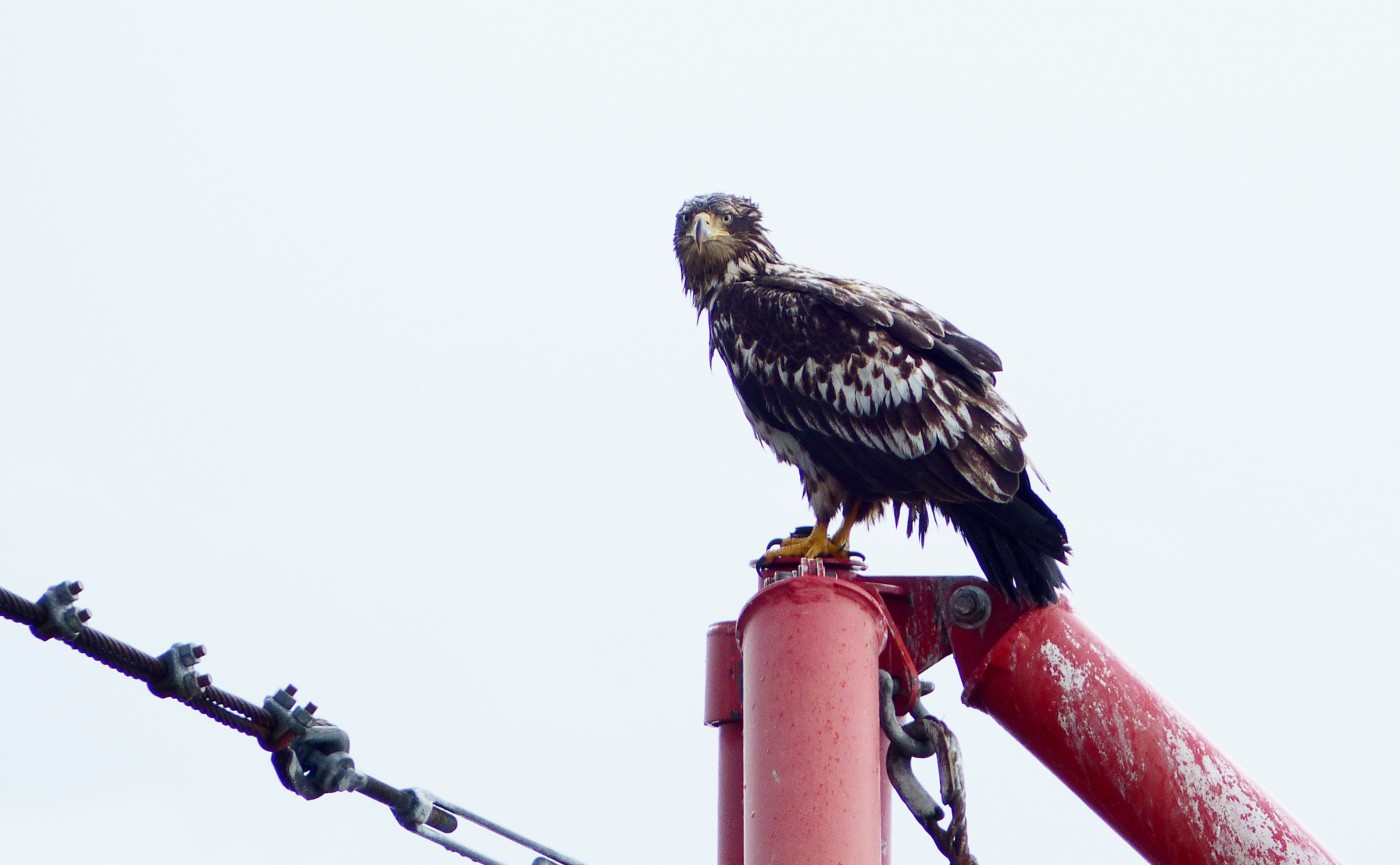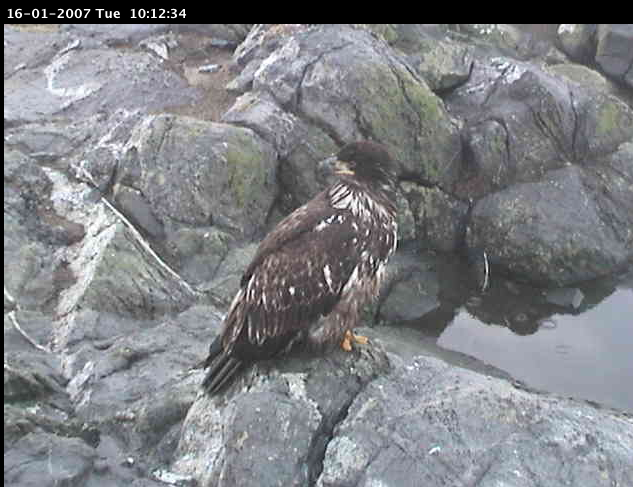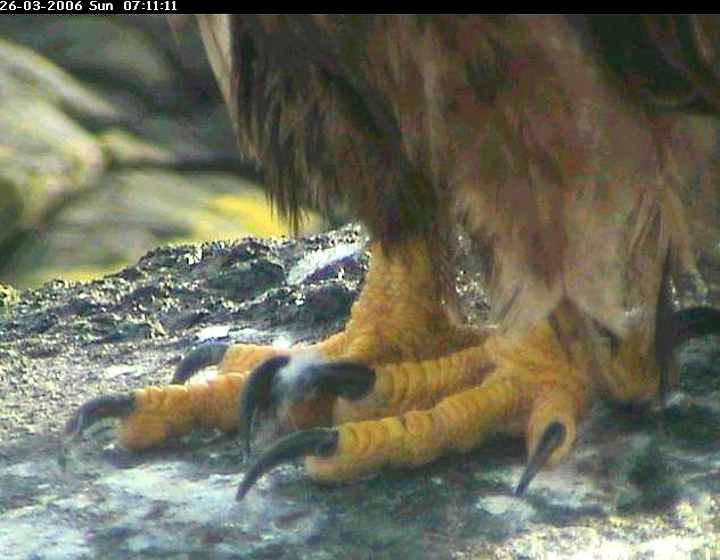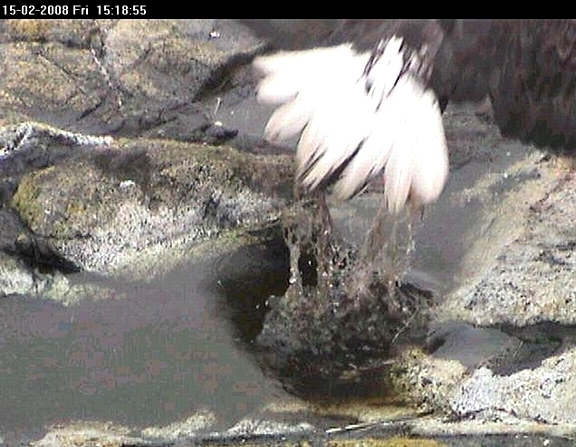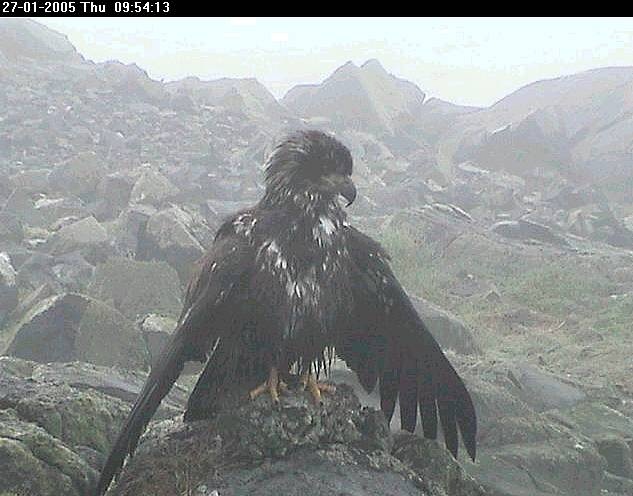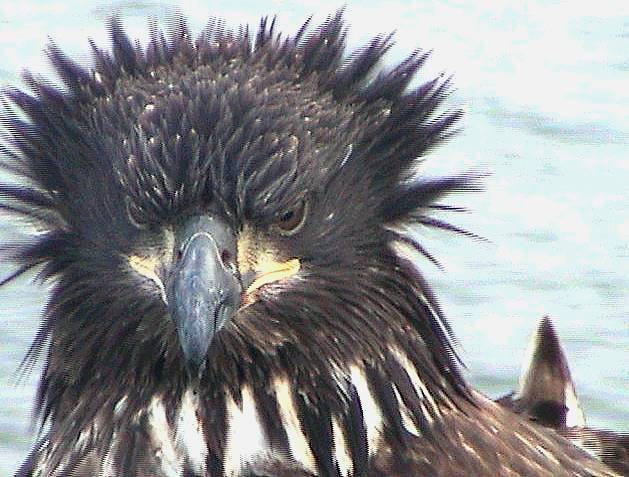- Click to enlarge. Photo by Pam Birley on remote cam 5
In November 2009, Ryan Murphy captured this set of images when a juvenile eagle was making his daily pass by to prey on a seabird. The juvenile california gull provides the meal for that day. Click the image to see a slide show video of this sequence..See the Eagle Set on Ryan’s Flickr site
Bald Eagles measure from 30″ to 43″ ( 76 to 109 cm) in length and from 70″ to 96″ ( 2 to 2.4 m) in wingspan. They have a high thin, chittering voice which contrasts with its magnificent appearance. Bald Eagle’s diet is primarily based on fish catching. It also eats carrion and crippled waterfowl. At Race Rocks, eagles frequently take adult Gulls and Pigeon Guillemots as can be seen in the accompanying images.
The adult Bald Eagle has a snow-white head and tail, the immature ones have brown head feathers which develop white underneath and gradually grow out over several years.
It was formerly found living all over North America. Hunting, poaching and the growth of civilization has had a negative impact in the Bald Eagle population whch has dimished considerably in the last decades. Nowadays it is found only in the Aleutians, Alaska, sections of Northern and Eastern Canada, British Columbia, Northern United States and Florida.
Its habitat is on or near seacoasts as well as close to large lakes and rivers, where the fish population is abundant. It nests in tall conifers, often old growth Douglas Fir or Cedar. Nests are common in the Southern part of Vancouver island. The closest to Race Rocks are on Bentinck Island and along Taylor Beach. The nests are renovated every year starting in January with new sticks, often ripped from tall dead fir trees. The eggs are white and come in groups of 1 to 3 each time.Its beachcombing , scavenging role, and the fact that it eats at the highest trophic level, can cause the Bald Eagle to accumulate pesticides in its body ( from contaminated fish and wildllife. ) The Bald Eagle population remains high in the rain forest coastal area of central and Northern British Columbia and Alaska.
This image comes from the slide show “Fresh Kill” It provides a closeup of an eagle whose head coloring is almost mature, but has not yet lost its dark speckling.
Reference: Miklos D. F. Uduvardy ,1977 The Audubon Society, Field Guide to North American Birds, Western region., Chanticler press, fifth edition: NY
- Eagles on North Rock, GF photo
- wet juvenile
- Looking backward
- Pam Birley captured many of these images on the remote control camera
- Talons
- Tail
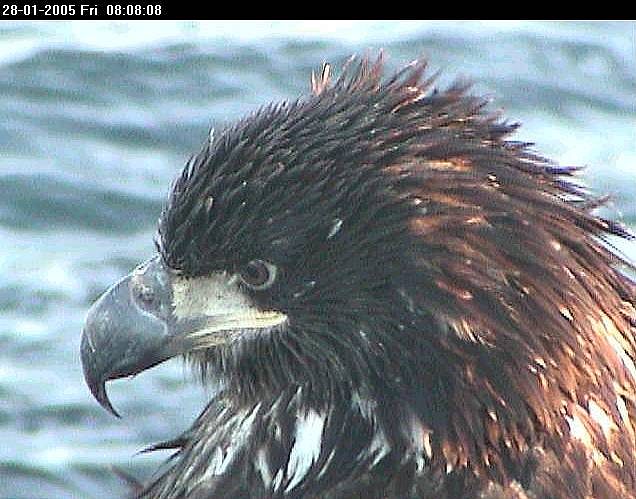 |
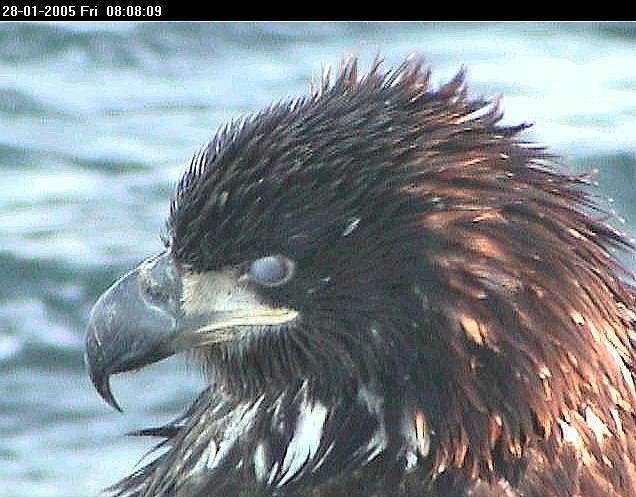 |
The nictitation membrane is a transparent inner eyelid in birds, reptiles, and some mammals that closes to protect and moisten the eye. It is also called the third eyelid. |
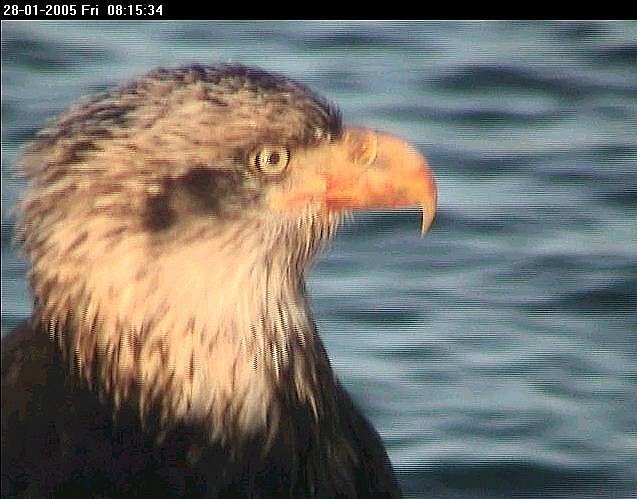 |
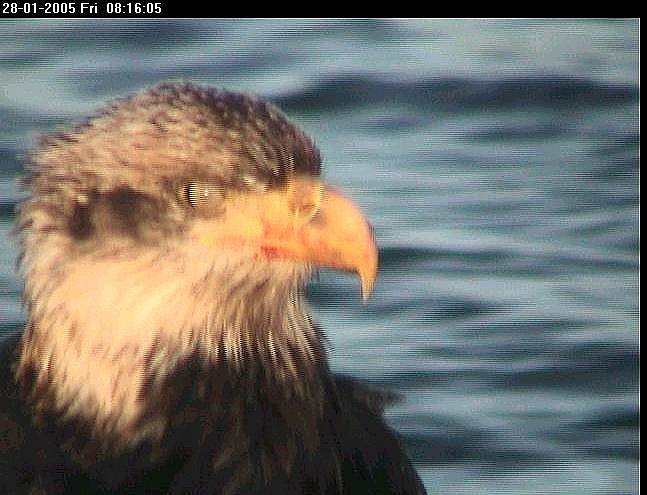 |
Pam captured these images of young eagles close to camera 5 in the spring of 2005 to help us demonstrate this adaptation.You can find further information about this feature at: http://ebiomedia.com/gall/eyes/protect.html |
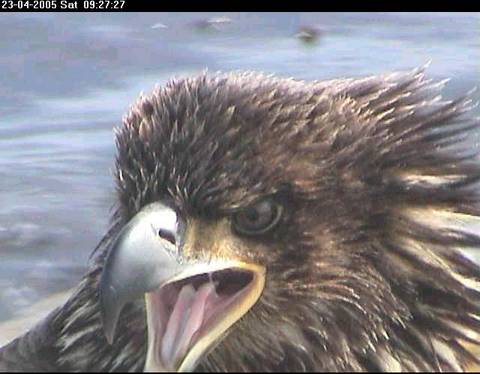 |
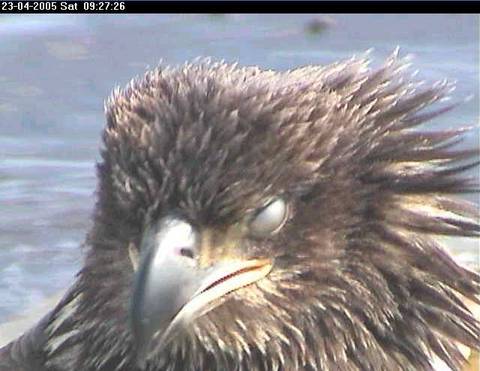 |
Other Members of the Class Aves at Race Rocks.
and Image File |
 The Race Rocks taxonomy is a collaborative venture originally started with the Biology and Environmental Systems students of Lester Pearson College UWC. It now also has contributions added by Faculty, Staff, Volunteers and Observers on the remote control webcams. Carolina Munoz 1987 The Race Rocks taxonomy is a collaborative venture originally started with the Biology and Environmental Systems students of Lester Pearson College UWC. It now also has contributions added by Faculty, Staff, Volunteers and Observers on the remote control webcams. Carolina Munoz 1987 |


